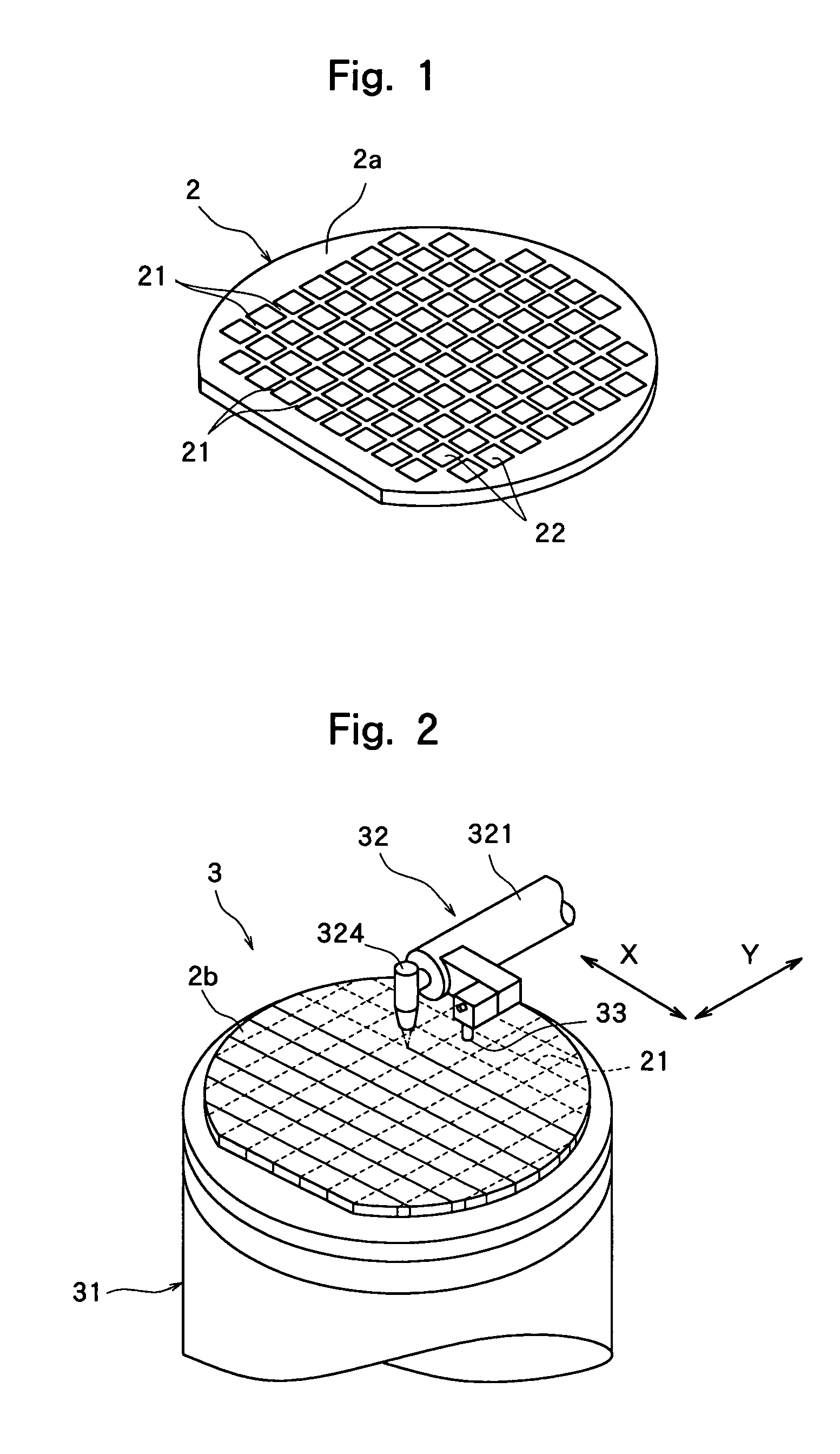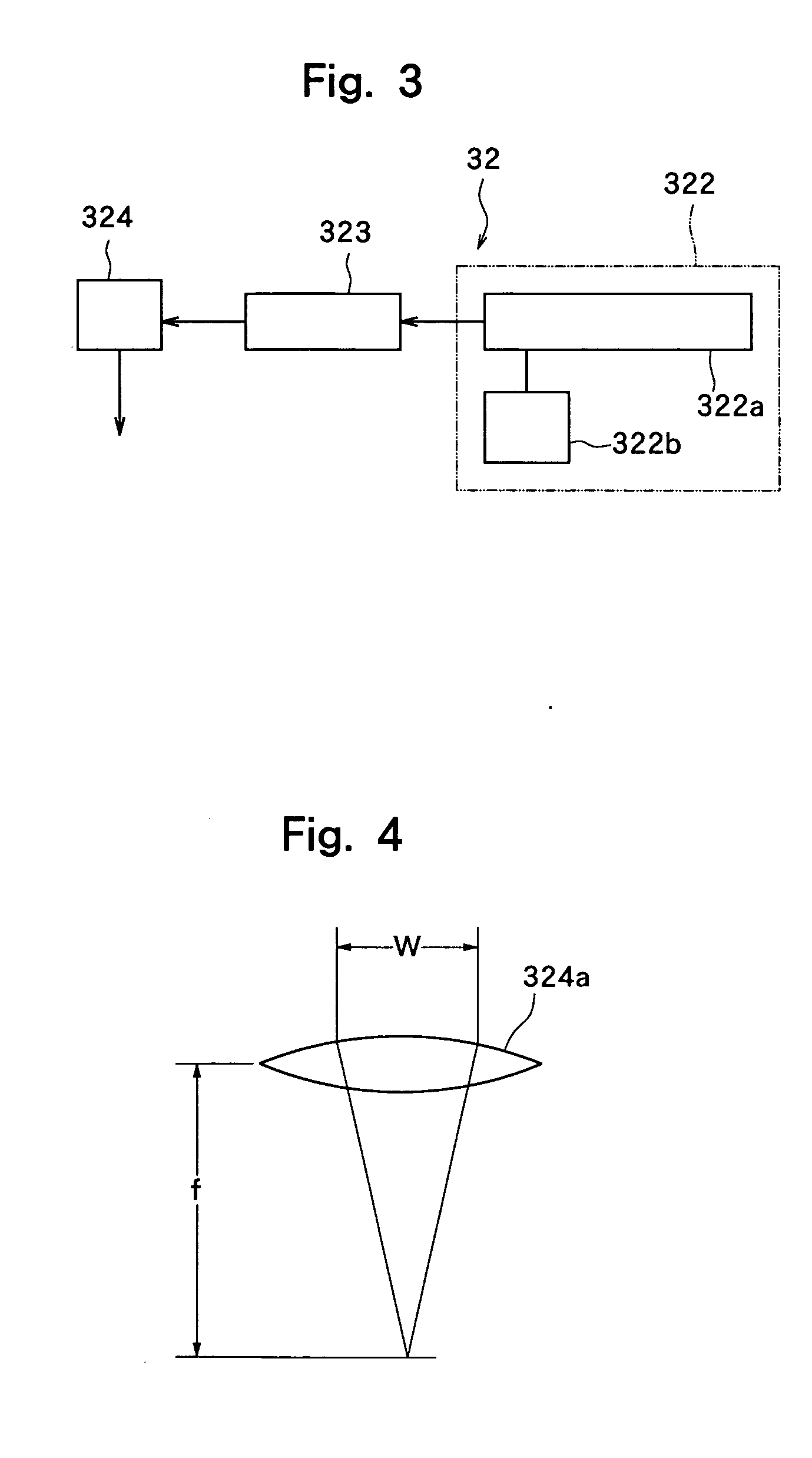Wafer dividing method
- Summary
- Abstract
- Description
- Claims
- Application Information
AI Technical Summary
Benefits of technology
Problems solved by technology
Method used
Image
Examples
experimental example 1
[0051] The above deteriorated layers were formed in a semiconductor wafer having a diameter of 6 inches and a thickness of 300 μm by changing the above coefficient k in a range of from 0.1 to 4.0 under the above processing conditions, and stress required for dividing the semiconductor wafer along each dividing line was measured in each of cases. For the measurement of stress, a three-point bending test was carried out in which the back surface of the semiconductor wafer was supported along the dividing line at positions 2.0 mm away from the dividing line on both sides and a load was applied to the front surface of the semiconductor wafer along the dividing line. The measured stress was stress on a cross section based on the load at the time when the semiconductor wafer was divided. The measurement results are shown in FIG. 10. It is understood that when the coefficient k is 1.0 to 2.5, stress required for dividing the semiconductor wafer is small.
[0052] After the deteriorated layer...
experimental example 2
[0056] A semiconductor wafer (silicon wafer) having a diameter of 6 inches and a thickness of 300 μm was divided into semiconductor chips of 2 mm×2 mm by the above-described method. FIG. 15 shows the yield rate of semiconductor chips obtained by dividing the semiconductor wafer along the deteriorated layers by carrying out the above dividing step (to be referred to as “tape expanding method” hereinafter) when the repetition frequency of the pulse laser beam applied in the above deteriorated layer forming step was set to 100 kHz, 150 kHz, 200 kHz, 300 kHz or 400 kHz (in this Example, the above coefficient k was 1). In FIG. 15, the horizontal axis shows the repetition frequency of the pulse laser beam applied in the above deteriorated layer forming step and the vertical axis shows the chip yield rate obtained by dividing the number of semiconductor chips obtained from the semiconductor wafer by carrying out the above tape expanding method, by the number of semiconductor chips formed o...
PUM
| Property | Measurement | Unit |
|---|---|---|
| Electric potential / voltage | aaaaa | aaaaa |
| Frequency | aaaaa | aaaaa |
Abstract
Description
Claims
Application Information
 Login to View More
Login to View More - R&D
- Intellectual Property
- Life Sciences
- Materials
- Tech Scout
- Unparalleled Data Quality
- Higher Quality Content
- 60% Fewer Hallucinations
Browse by: Latest US Patents, China's latest patents, Technical Efficacy Thesaurus, Application Domain, Technology Topic, Popular Technical Reports.
© 2025 PatSnap. All rights reserved.Legal|Privacy policy|Modern Slavery Act Transparency Statement|Sitemap|About US| Contact US: help@patsnap.com



